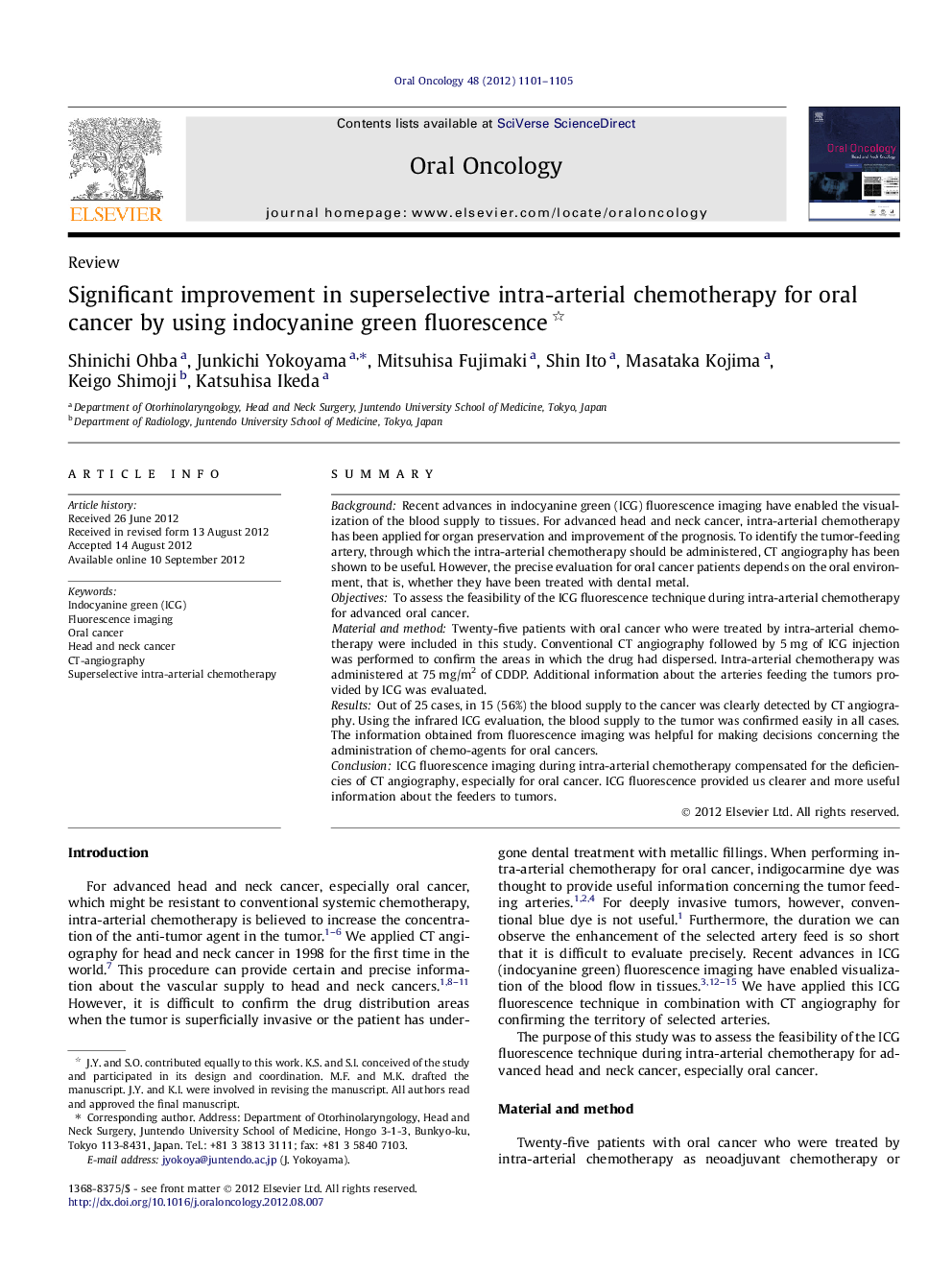| Article ID | Journal | Published Year | Pages | File Type |
|---|---|---|---|---|
| 6055096 | Oral Oncology | 2012 | 5 Pages |
SummaryBackgroundRecent advances in indocyanine green (ICG) fluorescence imaging have enabled the visualization of the blood supply to tissues. For advanced head and neck cancer, intra-arterial chemotherapy has been applied for organ preservation and improvement of the prognosis. To identify the tumor-feeding artery, through which the intra-arterial chemotherapy should be administered, CT angiography has been shown to be useful. However, the precise evaluation for oral cancer patients depends on the oral environment, that is, whether they have been treated with dental metal.ObjectivesTo assess the feasibility of the ICG fluorescence technique during intra-arterial chemotherapy for advanced oral cancer.Material and methodTwenty-five patients with oral cancer who were treated by intra-arterial chemotherapy were included in this study. Conventional CT angiography followed by 5Â mg of ICG injection was performed to confirm the areas in which the drug had dispersed. Intra-arterial chemotherapy was administered at 75Â mg/m2 of CDDP. Additional information about the arteries feeding the tumors provided by ICG was evaluated.ResultsOut of 25 cases, in 15 (56%) the blood supply to the cancer was clearly detected by CT angiography. Using the infrared ICG evaluation, the blood supply to the tumor was confirmed easily in all cases. The information obtained from fluorescence imaging was helpful for making decisions concerning the administration of chemo-agents for oral cancers.ConclusionICG fluorescence imaging during intra-arterial chemotherapy compensated for the deficiencies of CT angiography, especially for oral cancer. ICG fluorescence provided us clearer and more useful information about the feeders to tumors.
